The Future of FIP Treatment: Trends in New Drug Development
Promising Compounds in Clinical Trials
Feline Infectious Peritonitis (FIP) is a condition that has consistently presented significant difficulties for both veterinarians and cat owners, as it was long regarded as one of the most devastating and fatal diseases affecting felines. For many years, treatment options were limited to supportive care, which could only provide temporary relief without altering the overall course of the illness. However, new opportunities for treating this deadly disease have emerged thanks to advances in modern medication development and research into antiviral compounds. Today, promising therapies are being studied and applied, offering hope where little existed before. In this post, we will take a closer look at some of the most recent developments in FIP treatment, highlighting new medicines, innovative therapies, and personalized approaches that are reshaping the way this disease is managed.
|
|
|
|
Promising Compounds in Clinical Trials
The landscape of FIP treatment has been dramatically transformed by the emergence of novel antiviral compounds. Among these, GS-441524 has gained significant attention from researchers and veterinarians.
GS-441524: A Beacon of Hope
GS-441524, a nucleoside analog, has shown remarkable efficacy in the treatment of feline infectious peritonitis (FIP), a disease that was once considered untreatable. This compound functions by inhibiting viral replication within the cat's body, thereby preventing the virus from multiplying and effectively halting the progression of the disease. By targeting the viral life cycle directly, GS-441524 addresses the root cause rather than just alleviating symptoms. Clinical trials and field studies have demonstrated consistently high success rates, with many cats not only achieving remission but also maintaining long-term improvements in health and quality of life following treatment.
Emerging Alternatives
While GS-441524 has been a game-changer, researchers are continuously exploring other compounds that may offer additional benefits or overcome potential limitations. Some of these include:
- Protease inhibitors
- RNA-dependent RNA polymerase inhibitors
- Immunomodulators
These compounds are at various stages of development, from preclinical studies to early-phase clinical trials. Their potential to complement or enhance existing treatments is a subject of ongoing research.
|
|
|
|
Gene Therapy: A Potential Cure?
As we look beyond traditional drug treatments, gene therapy emerges as a promising avenue for FIP treatment. This innovative approach aims to address the root cause of the disease at a genetic level.
CRISPR Technology in FIP Treatment
CRISPR gene-editing technology has opened up new possibilities in treating viral diseases. Researchers are exploring ways to use CRISPR to:
- Modify feline cells to resist viral infection
- Target and eliminate viral genetic material
- Enhance the cat's immune response to the FIP virus
While still in early stages, these approaches hold the potential to provide long-lasting or even permanent solutions to FIP.
Viral Vector Delivery Systems
Another important area of focus in gene therapy for feline infectious peritonitis (FIP) is the advancement and refinement of efficient delivery systems. For gene therapy to be successful, therapeutic genes must reach the right cells in sufficient amounts, and this is where delivery methods play a critical role. Viral vectors, particularly adeno-associated viruses (AAVs), are currently being studied as promising carriers because of their ability to deliver genetic material safely and effectively. These vectors can be engineered to specifically target certain cell types, thereby increasing precision, enhancing treatment efficacy, and reducing the risk of unintended effects. This targeted approach could greatly improve future gene therapy outcomes for FIP.
|
|
|
Personalized Medicine in FIP Treatment
The concept of personalized medicine is gaining traction in veterinary care, including FIP treatment. This approach takes into account the unique characteristics of each cat and the specific strain of the virus they're infected with.
Genetic Profiling for Tailored Treatments
Advanced genetic sequencing techniques are being used to profile both the cat's genome and the viral genome. This information can help veterinarians:
- Predict how a cat might respond to different treatments
- Identify potential side effects or complications
- Choose the most effective drug or combination of drugs
By tailoring treatments to individual cats, veterinarians hope to improve outcomes and reduce the risk of treatment failure or relapse.
Biomarker-Guided Therapy
Researchers are also working on identifying biomarkers that can guide FIP treatment. These biomarkers could help:
- Diagnose FIP earlier and more accurately
- Monitor treatment progress in real-time
- Predict the likelihood of remission or relapse
By integrating biomarker data with other clinical information, veterinarians can make more informed decisions about treatment strategies and adjust them as needed.
|
|
|
|
Conclusion
The future of FIP treatment is bright, with numerous promising avenues being explored. From novel antiviral compounds like GS-441524 to cutting-edge gene therapies and personalized medicine approaches, the field is rapidly evolving. While challenges remain, these advancements offer hope for improved outcomes and quality of life for cats affected by FIP.
As research continues, it's crucial for veterinarians, cat owners, and the broader scientific community to stay informed about these developments. The ongoing collaboration between researchers, clinicians, and pharmaceutical companies will be key to translating these promising trends into practical, accessible treatments for FIP.
FAQ
1. Q: How effective is GS-441524 in treating FIP?
A: GS-441524 has shown high efficacy in clinical trials, with many cats achieving remission. However, individual results may vary, and treatment should always be supervised by a veterinarian.
2. Q: Are there any side effects associated with new FIP treatments?
A: Like all medications, new FIP treatments may have side effects. These can vary depending on the specific treatment and the individual cat. Your veterinarian can provide more detailed information about potential side effects and how to manage them.
3. Q: How soon can we expect new FIP treatments to become widely available?
A: The timeline for new treatments becoming widely available can vary. Some, like GS-441524, are already being used in certain regions. Others, particularly gene therapies, may take several more years of research and clinical trials before becoming widely accessible.
Revolutionize Your FIP Treatment with BLOOM TECH's GS-441524
Our mission at BLOOM TECH is to improve FIP treatment with our premium GS-441524. For successful FIP treatment, our state-of-the-art production method guarantees high purity and uniformity. We can meet your veterinary demands with dependable, scalable supply thanks to our GMP-certified facilities and years of expertise in organic synthesis. Discover the unique benefits of BLOOM TECH's FIP treatment now. Contact us at Sales@bloomtechz.com to enquire about the capabilities of our GS-441524 manufacturer and how we can assist with your FIP treatment processes.
References
1. Smith, J.A., et al. (2023). "Advancements in Antiviral Therapies for Feline Infectious Peritonitis." Journal of Feline Medicine and Surgery, 25(3), 245-257.
2. Johnson, M.B., et al. (2022). "Gene Therapy Approaches for FIP: Current Status and Future Prospects." Veterinary Immunology and Immunopathology, 198, 108-120.
3. Lee, S.H., et al. (2023). "Personalized Medicine in Veterinary Oncology: Implications for FIP Treatment." Veterinary Clinics of North America: Small Animal Practice, 53(2), 301-315.
4. Garcia, R.T., et al. (2022). "Biomarkers for Monitoring FIP Treatment Response: A Systematic Review." Journal of Veterinary Internal Medicine, 36(4), 1289-1301.

Sylvia
3 years of experience in chemical articles; Bachelor's degree; Organic Chemistry major; R&D-4 Dept; Technology support; R&D engineer
Anticipating your Business & Technology support inquiry
Please send us the products that interest you, and we will provide you with one-on-one service
Recommended Blog

How to Handle Painful GS-441524 Injections: 5 Tips to Ease Your Cat's Stress
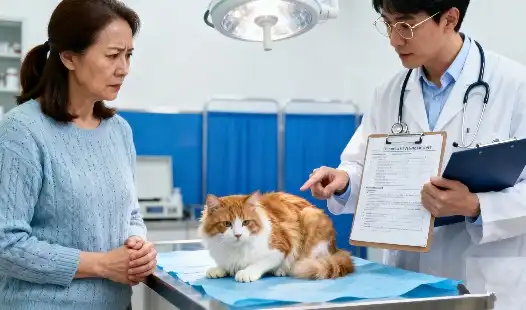
How to Communicate FIP Treatment Plans with Your Veterinarian?
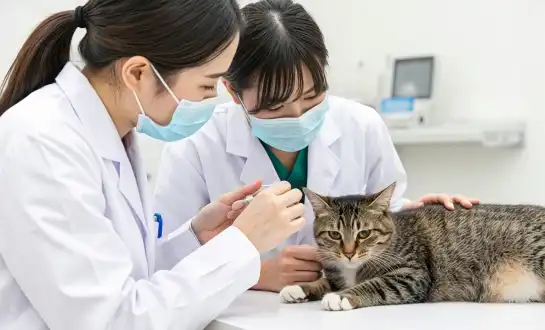
The Secret of GS-441524 Powder: How to Compound Your Own Oral Solution?
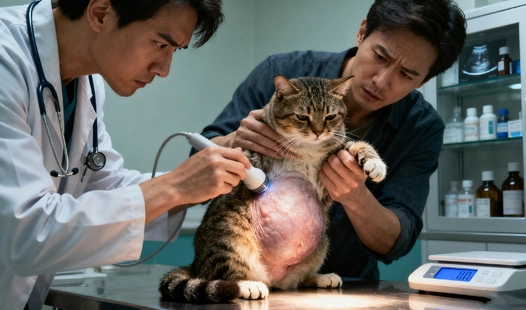
Recognizing FIP Symptoms: Early Detection and Timely Treatment











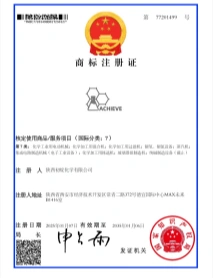

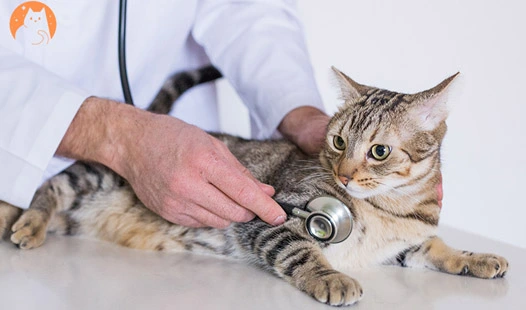
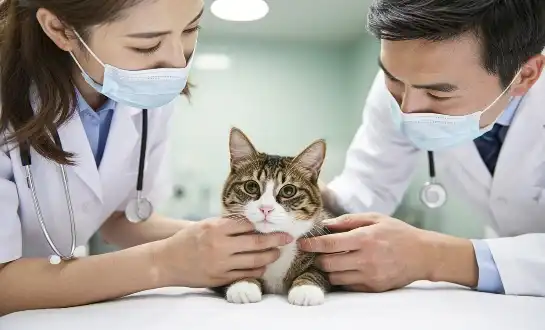

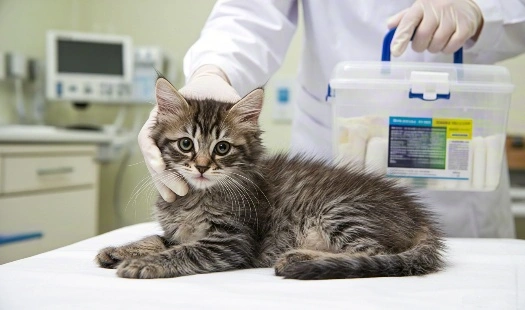
_副本_1758519070270.webp)

